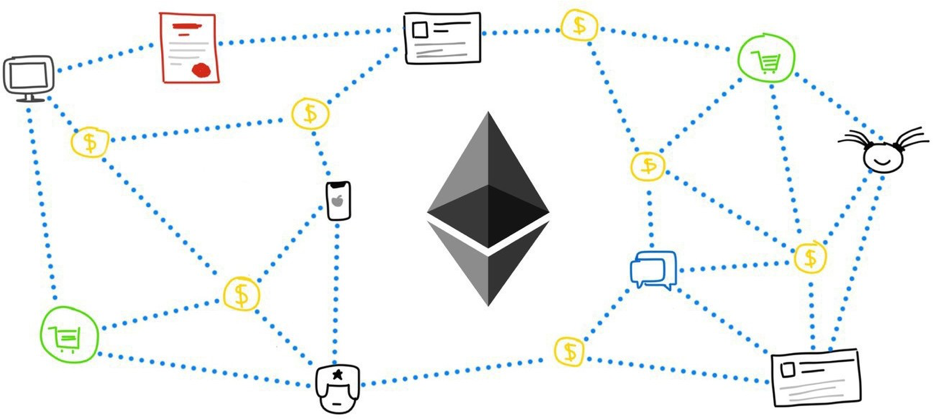Discover Ethereum’s game-changing smart contracts, automating agreements and eliminating intermediaries. Learn what they are, their significance, and how to create them on Ethereum. Explore the basics of Ethereum, including decentralization. Uncover contract design, security, and auditing best practices. Join the Ethereum ecosystem, dive into decentralized applications (DApps), and unleash blockchain innovation. Let’s harness the power of Ethereum smart contracts together!

Table of Contents
What is a smart contract and why are they important for Web3?
Smart contracts are self-executing computer programs that run on the blockchain. They are essentially digital agreements that can be programmed to automatically execute certain actions based on predefined conditions. These conditions are specified in the code of the smart contract, which is stored on the blockchain and can be accessed and verified by anyone with an internet connection.
Smart contracts have several characteristics that make them unique and valuable for Web3 applications. First, they are transparent, meaning that all parties involved in the contract can see and verify the terms of the agreement. Second, they are immutable, meaning that once the code is deployed on the blockchain, it cannot be altered or deleted. Third, they are self-executing, meaning that they automatically execute their functions without the need for intermediaries.
Smart contracts have several advantages over traditional legal agreements, such as increased transparency, security, and efficiency. However, they also have some limitations, such as the need for specialized programming skills and the inability to handle complex legal disputes.
Understanding Ethereum and the Solidity language
Ethereum is a decentralized, open-source blockchain platform that enables developers to build decentralized applications (dApps) and smart contracts, and it was created in 2015 by Vitalik Buterin.
Solidity is a high-level, contract-oriented programming language that is specifically designed to write smart contracts on Ethereum. It is a statically typed language, which means that data types are declared before they are used.
Solidity also supports inheritance, allowing developers to reuse code and create complex contract structures.
Solidity is a relatively new language, it is still evolving, which means that new versions may introduce breaking changes that require developers to update their code. Additionally, the lack of formal verification tools for Solidity can make it difficult to ensure the correctness of complex contracts.
To get started with Ethereum and Solidity, you’ll need to set up your development environment. There are several options available, but one of the most popular is the Remix IDE, which is a web-based integrated development environment that provides a user-friendly interface for writing, testing, and deploying smart contracts. You can also use other tools like Truffle or Visual Studio Code with the Solidity extension.
Creating and deploying your first smart contract on the Ethereum blockchain
To create and deploy a smart contract on Ethereum:
- Define the contract and its variables: Before you can write the code for your smart contract, you need to define what the contract will do and what variables it will use. For example, if you want to create a simple contract that allows users to store and retrieve data, you might define the contract as a “data storage” contract and create a variable to hold the data.
- Write the contract code in Solidity: Once you’ve defined your contract and its variables, you can start writing the code in Solidity. Solidity code is written in a text editor and saved with a “.sol” extension. The code defines the functions that the contract will perform, as well as any conditions that must be met for those functions to execute.
- Compile the contract: Once you’ve written your Solidity code, you’ll need to compile it into bytecode that can be executed on the Ethereum network. You can do this using a Solidity compiler like Remix or using the command line with another tool.
- Deploy the contract on the Ethereum network: Once your code has been compiled, you can deploy it on the Ethereum network. To do this, you’ll need to have an Ethereum account with enough ether to cover the gas fees required to execute the contract. You can deploy the contract using Remix or a command-line tool like Truffle.
- Interact with the contract: Once your contract is deployed, you can interact with it using a web3 interface. You can send transactions to the contract, call its functions, and read its state. You can also monitor the contract’s activity on the Ethereum blockchain using a block explorer like Etherscan.

Interacting with smart contracts using web3.js
Once you have deployed your smart contract, you can interact with it using web3.js, a JavaScript library for interacting with the Ethereum blockchain.
To interact with your smart contract using web3.js, you need to perform the following steps:
- Connect to the Ethereum network: Before you can interact with your contract, you need to connect to the Ethereum network using web3.js. You can do this by creating a new instance of the web3.js library and specifying the network provider.
- Load the contract: Once you’re connected to the network, you need to load the contract into your JavaScript code using the contract’s ABI (Application Binary Interface) and address. The ABI is a JSON file that describes the functions and variables of the contract, and the address is the location of the contract on the Ethereum network.
- Call contract functions: Once the contract is loaded, you can call its functions using the contract’s methods object. You can call functions to read data from the contract or to write data to the contract.
- When calling a function to write data to the contract, you need to send a transaction to the Ethereum network. Transactions can be sent using the send() method of the contract’s methods object. You’ll need to specify the Ethereum address that will sign the transaction and the amount of gas to be used by the transaction.
- When calling a function to read data from the contract, you can use the call() method of the contract’s methods object. This method returns the result of calling the function.
Interacting with smart contracts using web3.js can be complex, but it’s a powerful tool for building decentralized applications on Ethereum. With web3.js, you can create web interfaces that allow users to interact with your smart contracts directly from their browsers. To start coding smart contract, you can learn more on this Ethereum guide.
Best practices for writing secure and efficient smart contracts
While developing smart contracts on Ethereum, there are some common issues and best practices to keep in mind.
- Security
Smart contracts can hold large amounts of value, so it’s critical to ensure that they are secure. Some common security issues include reentrancy attacks, integer overflow and underflow, and front running. To minimize the risk of security issues, it’s recommended to use well-audited smart contract libraries, conduct extensive testing, and perform formal verification.
- Gas optimization
Each operation on the Ethereum network consumes a certain amount of gas, which is a measure of computational resources required to execute the operation. To minimize gas costs, it’s recommended to avoid unnecessary calculations, use data structures that minimize storage requirements, and batch transactions together when possible.
- Upgradeability
Smart contracts are immutable, meaning that their code cannot be changed once deployed. However, it’s sometimes necessary to upgrade a smart contract to fix bugs or add new functionality. To enable upgradeability, it’s recommended to separate contract logic from contract storage, use proxy contracts, and implement a robust upgrade mechanism.
- Testing
Testing is essential for ensuring that smart contracts function correctly and securely. It’s recommended to write comprehensive unit tests, integration tests, and end-to-end tests.
- Documentation
Clear and concise documentation is essential for ensuring that smart contracts can be easily understood and maintained. It’s recommended to document all contract functions, events, and variables, as well as any external dependencies.
By keeping these common issues and best practices in mind, you can develop secure, efficient, and maintainable smart contracts on Ethereum.
Real-world use cases for smart contracts on Ethereum
Smart contracts on Ethereum have a wide range of potential use cases. Here are a few examples:
- Decentralized finance (DeFi)
DeFi is a growing sector that aims to provide financial services using decentralized technologies. Smart contracts on Ethereum are at the structure of many DeFi applications, such as staking platforms, decentralized exchanges, and stablecoins.
- Supply chain management
Smart contracts can be used to track and manage the flow of goods and services in a supply chain. This can improve transparency, reduce costs, and prevent fraud. A case study is Walmart: It implemented a food tracking system using smart contracts.
- Gaming
Smart contracts and NFTs can be used to create provably fair and transparent gaming platforms.
- Real estate
Smart contracts can be used to facilitate the buying, selling, and leasing of real estate. This can reduce the need for intermediaries and streamline the process.
- Identity management
Smart contracts can be used to manage and verify identities in a decentralized manner. This can improve privacy and reduce the risk of identity theft.
As the technology continues to evolve and mature, we’re likely to see even more innovative applications in the future.
Exploring the future of Web3 and smart contracts on Ethereum
Here are some of the trends and developments to watch for in the coming years:
- Scalability
One of the main challenges facing Ethereum is scalability. As more applications are built on the platform, the network can become congested, leading to slow transactions and high fees. To address this, several scalability solutions are being developed, such as sharding and layer 2 solutions.
- Interoperability
As the Web3 ecosystem grows, there is a need for greater interoperability between different blockchains and protocols. Several projects, such as Polkadot and Cosmos, aim to create interoperability frameworks that allow for seamless communication between different networks.
- Privacy
While Ethereum transactions are publicly visible on the blockchain, there is a growing need for privacy in certain use cases. Several projects, such as Aztec Protocol and Tornado Cash, are working on privacy solutions for Ethereum.
- Sustainability
As the demand for Ethereum grows, there is a need to address the environmental impact of the network.
- DAOs
DAOs are organizations that operate on the blockchain, with decisions made by token holders rather than a central authority.
Conclusion
Ethereum and smart contracts have opened up a world of possibilities for decentralized applications and the Web3 ecosystem. By leveraging the power of smart contracts, developers can build trustless and transparent applications that operate on a decentralized network.
We hope that this article has provided a solid foundation for understanding Web3 and smart contracts on Ethereum and inspires you to explore the exciting world of decentralized applications.

An experienced leader in software engineering and technology, I’ve driven value for top-tier Fortune 100 and 500 clients as the former CTO of Big Drop Inc. Overseeing a global team, we secured 34 global awards for pioneering web design using our proprietary tech. As the Co-Founder of Motion Design School, I created an innovative platform for global artists. Now, I apply my expertise to the dynamic world of blockchain, leveraging years of experience to shape decentralized technology’s future.